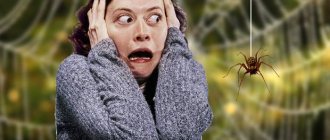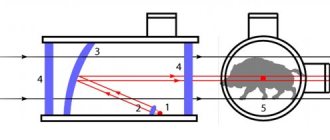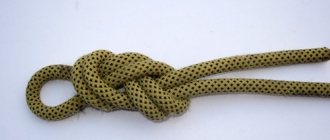Insects are an important food source in many parts of the world, and are also gaining popularity and acceptance in countries that have not traditionally eaten them. Why eat insects? Insects are nutritious and numerous. They contain large amounts of protein, fat, vitamins and minerals. How insects are eaten and their nutritional value depends on their diet, species, stage of development, and how they are prepared. Thus, an insect that tastes similar to chicken in one case may taste like fish or fruit in other circumstances. If you've eaten insects before and didn't like it, consider giving them another try. If you've never eaten insects, here's a good list of where to start your food experiments.
Grasshoppers and crickets
There are about 2,000 species of edible insects, but grasshoppers and crickets are among the most popular for human consumption. They can be eaten fried, boiled or stewed. In some countries, these insects are farmed to be ground into edible protein powder. Grasshoppers, crickets, and locusts belong to the order Orthoptera.
Grasshoppers and locusts
In the summer season, you can find grasshoppers in the fields and meadows, which can also be eaten. Grasshoppers can be fried over a fire, strung on a stick, or deep-fried (boiling oil). First season well with spices and salt.
Locust
Locusts are similar to grasshoppers, but much larger. As you know, John the Baptist even ate grasshoppers: the locusts, which he ate with wild honey, are locusts, a close relative of the grasshopper.
According to the Book of Leviticus (11:22), four types of insects were considered acceptable in the diet of the ancient Israelites: “...of these you shall eat: the locust with its kind, the solam (type of locust) with its kind, the hargol (beetle) with its kind, and the chagab ( grasshopper) with her breed.” The Gospel of Matthew (3.4) says that John the Baptist ate locusts and wild honey in the desert. Acrids are known to be several species of true locusts common in the Middle East and North Africa.
Carlton Kuhn's book "The Hunting Man" tells how the Indians caught locusts. They dug a trench and filled it with dry grass, which the locusts feed on, then they drove the locusts into the trench with sticks, they set the grass in the trench on fire, the locusts were fried, the villagers collected the ready-made fried locusts and carried away.
The pioneers of America also prepared locusts. They boiled it in salt water and then fried it in butter with vegetables and vinegar.
During the summer periods, the Indians of California consume huge quantities of locusts. They soaked these insects in salt water, then baked them in clay ovens, then ground them and added them to soups.
In Africa, they love locusts; they eat them raw, cook them on stones or on an open fire. In Japan, locusts are marinated in soy sauce and fried. In Asia they fry in oil. In Taiwan, locusts are a delicacy, served even in the most expensive restaurants.
Locust is very nutritious. It contains 50 percent protein (more than beef), as well as calcium, phosphorus, iron, vitamins B2 and niacin (nicotinic acid - vitamin PP)
How to cook locusts?
Before cooking, locusts should be boiled, after removing the legs and wings, then fried in oil. According to some gourmets, locusts taste like crayfish
Caterpillars
Almost all types of crickets and grasshoppers are edible, but the same cannot be said for caterpillars. Caterpillars are the larvae of butterflies. Like their adult forms, some caterpillars are toxic. Larvae of the South African peacock eye Gonimbrasia belina is one of the edible species of caterpillars. They have a particularly high iron content of 31-77 mg per 100 g (compared to 6 mg per 100 g for beef). These caterpillars are an important food source in Africa, and are becoming increasingly popular elsewhere.
Other edible caterpillar species include Aegiale hesperiaris (commonly found in Agavero liqueur), as well as the bamboo worm (Omphisa fuscidentalis) and silkworm (Bombyx mori).
Feed additive for farm animals from flies
Since 2015, New Biotechnologies LLC has been producing protein from fly larvae
, which is used as a feed additive for farm animals.
of protein from black soldier fly larvae
is due to open in 2021 , which received a grant from the state. This larva grows in just 6 days to a size where it can be processed into flour. The flour is not intended for humans, but for feeding pets and fish; it is rich in protein, phosphorus and calcium. The black fly larva does not get sick, because the body contains a substance similar to an antibiotic, which means there will be no need to use drugs during breeding. Black soldier flies do not have a developed oral apparatus, do not feed, do not bite, are not carriers of diseases, do not bother people, unlike house flies, they are not interested in human housing, they are unpretentious and produce numerous offspring.
Protein (protein) content of black soldier fly
- Larva - 40 g of proteins per 100 g.
- Dried larva - 35-40 g of proteins per 100 g.
- Dried larva after defatting—60-67 g of proteins per 100 g.
Palm weevil larvae
The palm weevil larva (Rhynchophorus ferrugineus) is a tasty insect, especially when fried in its own fat. These larvae are very popular in Central America, Malaysia and Indonesia. Cooked grubs are said to be similar to sweetened bacon, while raw grubs are prized for their creamy texture. Palm weevils are tropical insects native to Southeast Asia. Although they are abundant on palm trees, indoor cultivation of the larvae is practiced in Thailand.
Palm larvae
Palm maggots are the larval form of palm weevils. This tasty delicacy is most often fried in its own fat. Larvae are especially popular in Indonesia, Central America and Malaysia. Cooked grubs taste like sweet bacon, while fresh they are praised for their creamy texture. Palm maggots are tropical creatures native to Southeast Asia. Although they are usually harvested from palm trees, they are also grown artificially in Thailand.
Mealworm
Mealworms have long been fed to birds and other pets in Western countries, and they have also gained acceptance as a source of human food. Mealworms are easy to raise in temperate climates, unlike many edible insects that prefer the tropics. When reared as a food source, the larvae feed on oats, grains or wheat bran with apple, potato or carrot for moisture. Their nutritional value is similar to beef. For human consumption, mealworms are fried, boiled, or ground into powder. They taste more like shrimp than beef, which makes sense since mealworms are the larval form of the mealworm beetle (Tenebrio molitor). Like shrimp, beetles are arthropods. Many other beetle larvae from the order Coleoptera are also edible.
Mealworms have been equated to beef: the European Union will give the go-ahead for their mass production
January 15, 2021 19:23 Artem Luchko, Elena Podmakhova Photo: lookatme.ru/
The EU Food Safety Agency has confirmed that yellow mealworms are suitable for human consumption and are rich in proteins. The decision is expected to be followed by authorization for the sale of yellow mealworms - the larvae of the mealworm - throughout the EU in the coming months. The main components of the product are protein, fat and fiber.
However, the European Union will not be the first to grow insects on farms en masse. In many countries around the world, insects have long been the basis of the diet.
Grasshopper baked goods
In 2013, a group of students from McGill University (Montreal) received the prestigious Hult Prize and $1 million for developing grasshopper flour to help fight hunger. Competitors were required to establish “a social enterprise capable of providing food to undernourished communities, particularly the 200 million people living in urban slums.” As a result, the students came up with nothing better than to breed grasshoppers in poor areas of Mexico, Thailand and Kenya, which will later be turned into flour for baking and other products. According to the proposed technology, insects must first be dried and then frozen in sealed bags, then washed, dried again and ground into powder. As a result, the new power source will not only be available all year round, but will also be inexpensive. A $1 million capital pledge will help them launch this program.
Peacock eye larvae
Dried caterpillars of the moth Gonimbrasia belina have always been an important source of protein for South Africans. Collecting these caterpillars is a common economic activity of Africans, and in the future, probably, ours as well. Today, dried, smoked or pickled caterpillars are sold in supermarkets and markets, and cost four times more than traditional meat. To prepare caterpillars for consumption, they are first cleaned of their entrails, either by simply squeezing them in your hands or by cutting them lengthwise. After this, they are eaten raw or boiled in salted water and dried in the sun. They do not have a particularly strong taste and, according to those who have tried them, they are similar to dried tofu or tea leaves. Therefore, they are often served with fried onions or used in the preparation of soups, sauces and porridges.
Silkworm larvae
What Australians call witchetti larvae are known among entomologists as gypsy moth larvae. They have always been a traditional food for local Aborigines, who roast them in coals or over open fires. When cooked, the maggots taste like scrambled egg-flavored nuts with soft mozzarella cheese wrapped in puff pastry. But the gourmets most accustomed to eating larvae eat them alive.
In Asia, silkworm larvae are also popular, only of a different type - mulberry. The caterpillars, which feed exclusively on mulberry leaves, are considered a delicacy in Vietnam and China and are endowed with many beneficial properties. Insects play a prominent role in Korean cuisine, making up the popular dish pondegi, which consists of larvae steamed or boiled in oil and spices. In Japan, silkworm larvae are served as tsukudani, that is, boiled with seaweed in a marinade of soy sauce, sake, mirin and sugar. In the Indian state of Assam, boiled pupusas are eaten with salt or fried with chillies and herbs and eaten as a snack.
Silkworms have even been suggested as a possible alternative to the traditional diet of astronauts. Chinese researchers said that insects could be a real salvation during long space travel, lasting several years. Miniature ecosystems in which the larvae will grow and develop can become a virtually inexhaustible source of animal protein.
Ants
Ants are distributed throughout the planet - from the Arctic to the tropics. They are dried in the sun, smoked, steamed. For example, in poor rural areas of Thailand, spicy rice is often prepared with carpenter ants fried in oil. Ants are very popular in Colombia, where local farmers sell them on trays live and cooked for about $6 per 1 kg. In Cambodia and Laos, red forest ants are widely eaten, and they are sold even cheaper in local markets - about $1 per 1 kg.
Indians living in the Amazon basin prefer to eat winged females. They are caught in baskets as they fly out of their nests in huge swarms, and their fried bellies are said to taste like fried bacon. Australian Aborigines eat honey-collecting ants, which live underground at a depth of 2 m, but have a sweet taste. In Mexico, escamoles ant pupae are considered a delicacy and can be found on the menus of city restaurants. They are usually served fried without any additions or boiled with garlic and onions.
Termites
Termites (they are not related to ants, although they are similar to them) are widespread in African countries, especially in those adjacent to the Sahara Desert. All members of the colony are eaten, including eggs and females, the largest of which can reach the size of a potato tuber. A kind of butter is also prepared from termites. To do this, they are boiled and the floating fat is collected from the surface, after which it is used to prepare other dishes.
Palm weevil
Red palm weevil larvae have long been part of traditional Southeast Asian cuisine, where they are deep-fried for a few minutes and served with salt and a little white pepper. These larvae are also consumed raw, as they have a creamy taste; when boiled, they have a meaty taste, similar to bacon. They are often cooked in palm flour. In New Guinea, on special holidays they are roasted on a spit.
The palm weevil is a fairly large insect, with some individuals reaching up to 8 cm in length. These insects are nasty pests that chew holes in palm tree trunks and kill plants.
Stink bugs
Tree stink bugs (or stink bugs in common parlance) are eaten as a snack in many countries in South Africa, but before that they are soaked in warm water to get rid of the overly pungent aroma. In South America (where they eat the local variety of stink bugs), on the contrary, they are valued for their flavor, so they are added to food as a seasoning: they are made into sauces, fried and added to tacos and pates. Shield insects are also prized for their distinct scent in Vietnam, where they are used in spicy stir-fries, and in Laos, where these insects are ground with spices and herbs into a paste called chio.
Mealworms
The larvae of the mealworm (or flour beetle) are one of the few insects that are consumed in the Western world, for example in the Netherlands. The nutritional value of mealworms is difficult to overestimate; in addition, they contain a lot of copper, sodium, potassium, iron, zinc and selenium. Dutch scientist Arnold van Huis, one of the main popularizers of the mealworm diet, together with a local school of cooks, even published an entire cookbook with recipes for dishes from these insects: in it you can find rolls, baskets and other dishes made from larvae.
Now everyone can grow the food of the future. The Open Source Bug Farm Kit, developed by Tiny Farms, allows you to create a personal farm with everything you need to start growing edible beetle larvae at home. The set consists of two main containers, a mounting frame, a selection kit and an incubator. The company offers to either purchase a ready-to-use farm, or make it yourself according to the drawings, which are publicly available.
Currently, the sale of insects as food is prohibited in France, Germany, Italy, Spain and other countries. However, the organization's findings may change this situation.
The worms are farmed and fed wheat flour or bran, even though they are omnivores. The delicacy is prepared as follows: first it is boiled in boiling water five minus, then dried in an oven and only then packaged for delivery to the store. The worms reportedly taste like peanuts.
Earlier, a UN food security expert recommended that Russians eat insects.
Ants
Several species of ants are a highly prized delicacy. Lemon ants (Myrmelachista schumanni) from the Amazon jungle are said to have a distinctive lemon aroma. Leafcutter ants are usually fried and are said to taste similar to bacon or pistachio nuts. Honey ants are eaten raw and taste sweet. In Western society, ants from the genus Camponotus are considered the most edible.
Adult ants, their larvae and eggs can serve as a source of food for humans. Ant eggs are considered a special form of insect caviar and have a high price. Insects are eaten raw (even alive), fried, boiled, crushed and as an additive to drinks.
Wasps and bees are also edible for humans, and are in the same order as ants.
Other edible insects
Other edible insects include dragonflies, cicadas, bee larvae, cockroaches, butterfly pupae and maggots. Earthworms are also a popular food item, but they are not insects, but belong to annelids - a type of invertebrate animal. Edible worms contain large amounts of iron and protein.
Although scorpions and spiders are not insects, people usually do not separate them. Like insects, these arachnids are arthropods and are related to crustaceans such as crabs and shrimp. Spiders and scorpions are the terrestrial equivalent of seafood. Lice are also edible (though eating them in front of other people may seem a little weird).
Other arthropods that often become people's dinner include woodlice, water beetles (said to taste like fruit), bed bugs, June beetles and even dung beetles!
Advice for beginning entomophagists
If you decide to try the creatures described above, make sure you are eating insects intended for human consumption. Wild-caught insects may be contaminated with pesticides or parasites, making it impossible to know what they ate. Edible insects are sold in stores, online and in specialty restaurants. You can raise some edible insects yourself, such as mealworms.











